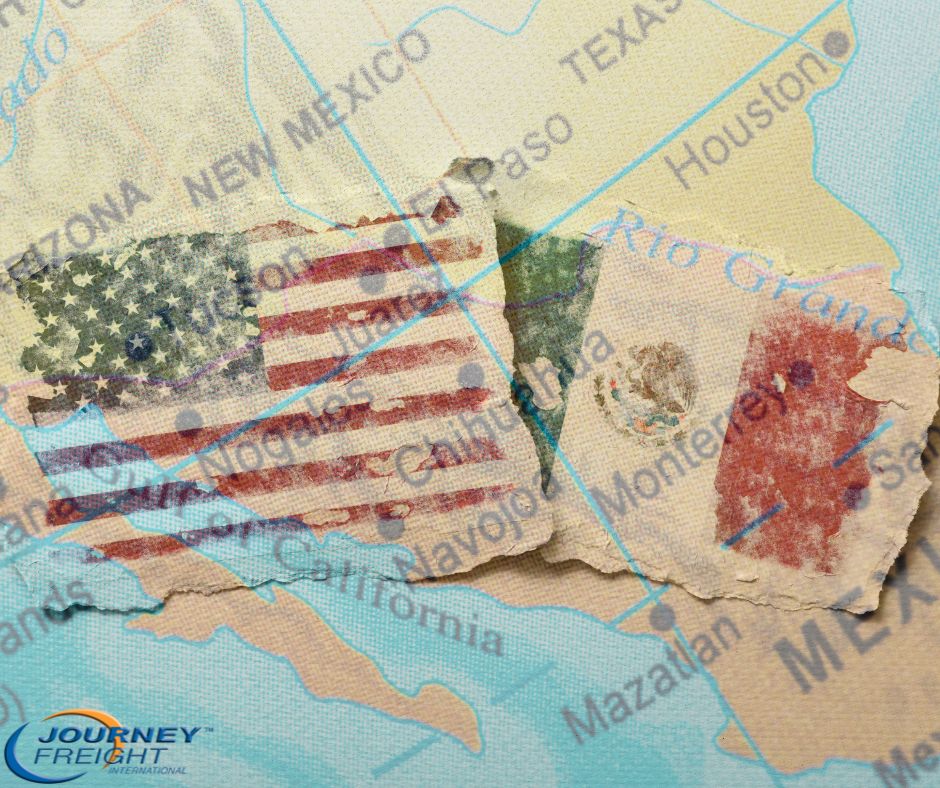
Mexico’s Trade Boom: A Catalyst for US Transport
In recent years, the flourishing trade relationship between Mexico and the United States has become a defining force, driving economic expansion and reshaping the transport industry. The substantial Year-Over-Year (YOY) growth in key metrics underscores the transformative nature of this partnership.
Record-Breaking Trade Volumes
The trade volumes between Mexico and the US have surged to unprecedented heights, surpassing $700 billion in 2023. This staggering figure represents a remarkable 15% YOY growth, solidifying the economic interconnectedness between the two nations. The implications of this record-breaking trade volume extend beyond numbers, manifesting in a robust economic synergy.
Mexico’s expanding trade footprint has initiated a paradigm shift in supply chain dynamics. Notably, YOY growth in the diversification of supply chains has seen Mexican manufacturers and suppliers playing a pivotal role. This strategic evolution is prompting a reevaluation of transportation routes and methods, aiming for greater efficiency and resilience.
Surge in Cross-Border Trucking and Rail
The heightened trade activity has led to a substantial YOY growth of 12% in cross-border trucking. The Bureau of Transportation Statistics highlights an increased number of trucks crossing the US-Mexico border, indicative of a heightened demand for efficient freight movement. This surge poses both opportunities and challenges, requiring an agile and responsive transport infrastructure.
Given Mexico’s prominence in key sectors, such as automotive and manufacturing, there has been a considerable YOY growth of 18% in cross-border rail shipments. This growth underscores the increasing demand for rail services, reflecting the changing landscape of cross-border transportation needs and preferences.
Strategic Infrastructure Investments Tackling Congestion Issues
Both Mexico and the US are making strategic infrastructure investments at crucial border crossings and transport hubs, showing significant YOY growth. This commitment aims to enhance overall efficiency, alleviate congestion, and accommodate the growing trade flow. The importance of well-planned infrastructure development becomes apparent as trade volumes continue to rise.
While the surge in trade is positive, it brings along challenges, with border congestion being a significant hurdle. Delays in customs processing have prompted a YOY growth of 15% in technological integration within the transport industry. This growth signifies ongoing efforts to address and streamline customs procedures, ensuring a smoother flow of goods across borders.
Sustainable Practices on the Rise
The intensified trade relationship has prompted an increased focus on sustainability, with YOY growth in environmental consciousness. Both Mexico and the US are exploring eco-friendly transport solutions and sustainable practices, aligning with global efforts to reduce the carbon footprint associated with heightened freight movement.
Challenges in Mexico-US Transport
Despite the remarkable growth, challenges persist in the Mexico-US transport corridor. Border congestion remains a significant hurdle, demanding coordinated efforts to address delays in customs processing. Additionally, regulatory procedures and infrastructure limitations pose challenges that necessitate strategic interventions for a more seamless and resilient transport network between the two nations. Overcoming these challenges is crucial to sustaining the positive trajectory of the Mexico-US trade relationship and ensuring its long-term viability.



